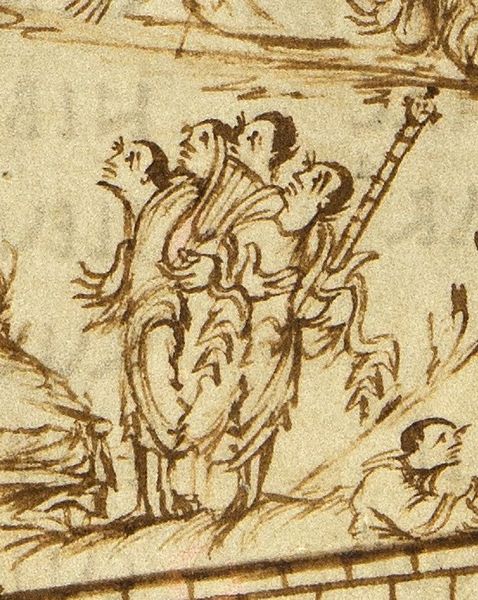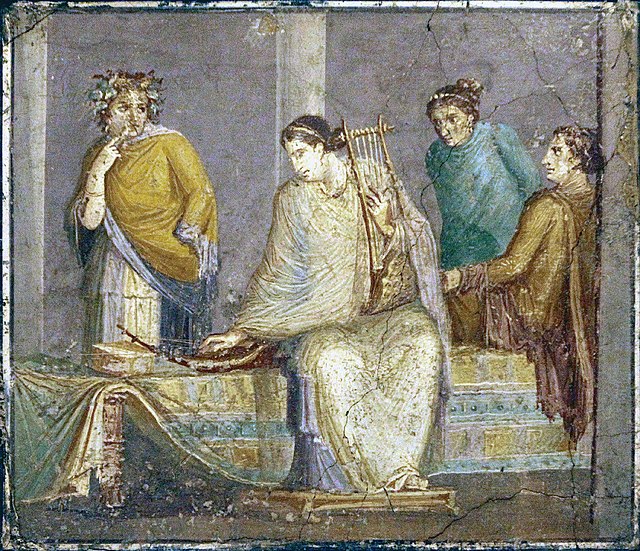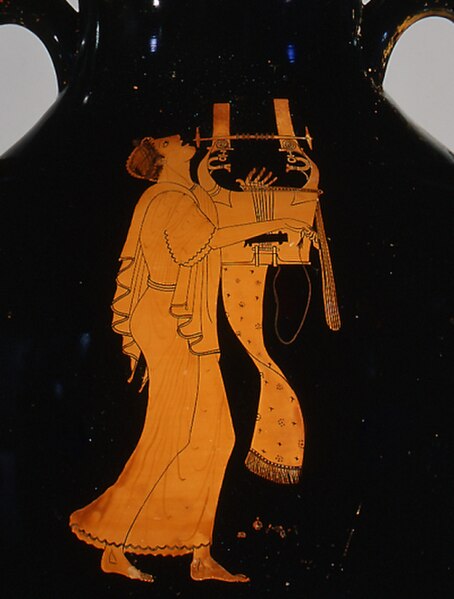The cythara is a wide group of stringed instruments of medieval and Renaissance Europe, including not only the lyre and harp but also necked, string instruments. In fact, unless a medieval document gives an indication that it meant a necked instrument, then it likely was referring to a lyre. It was also spelled cithara or kithara and was Latin for the Greek lyre. However, lacking names for some stringed instruments from the medieval period, these have been referred to as fiddles and citharas/cytharas, both by medieval people and by modern researchers. The instruments are important as being ancestors to or influential in the development of a wide variety of European instruments, including fiddles, vielles, violas, citoles and guitars. Although not proven to be completely separate from the line of lute-family instruments that dominated Europe, arguments have been made that they represent a European-based tradition of instrument building, which was for a time separate from the lute-family instruments.

Two instruments that can be identified as a cythara. At left a cithara as lyre, on the right another type cythara, with a neck and frets. From the Utrecht Psalter, Psalm 145–146: "psallite Deo nostro in cithara" ("sing to our God upon the harp.") The manuscript is from the 9th century, but the images are thought to be copied from an earlier manuscript.
Paris, France. An instrument from the Stuttgart Psalter (France), early 9th century, labeled "cythara" in that text. Shown vertically here, most illustrations in the psalter show it played held in the arms horizontally, like a citole.
Image of transformation of cithara lyre to cythara lute. (A) base rotta (C) the first transformation (B) the cithara as lute (D) the cithara as lute. Illustrated by an Anglo-Saxon artist in Reims.
Rotta from a 1700 b.c. fresco. Strings narrowed, and adding fingerboard would create the crwth and plucked guitar fiddles.
The kithara, or Latinized cithara, was an ancient Greek musical instrument in the yoke lutes family. It was a seven-stringed professional version of the lyre, which was regarded as a rustic, or folk instrument, appropriate for teaching music to beginners. As opposed to the simpler lyre, the cithara was primarily used by professional musicians, called kitharodes. In modern Greek, the word kithara has come to mean "guitar", a word which etymologically stems from kithara.
Woman with cithara (right) and sambuca (left). Roman fresco from Pompeii, 1st century CE (National Archaeological Museum, Naples).
Apollo kitharoidos (Apollo holding a cithara and wearing the customary kitharōdos’ robes) and musagetes (leading the Muses). Marble, Roman artwork, 2nd century CE.
Greek vase drawing depicting a man playing a cithara with eight strings. Note the plectrum in his lowered right hand.
Kithara player by the Berlin Painter c. 490 BCE








